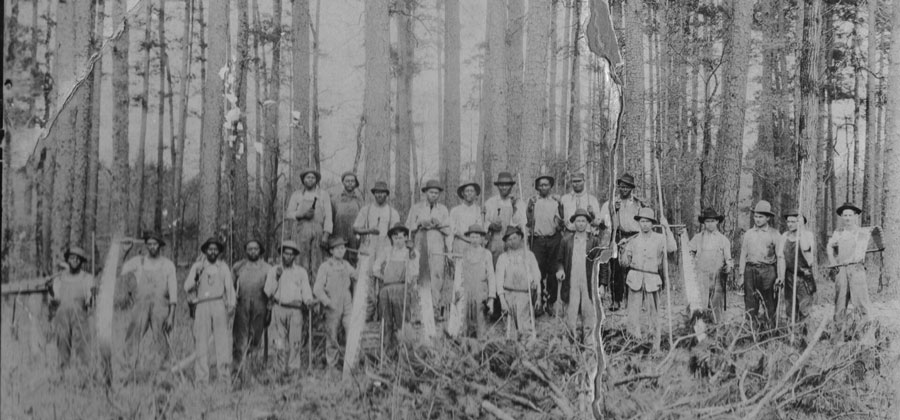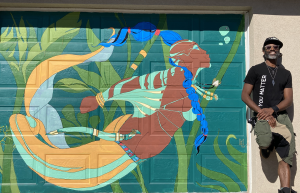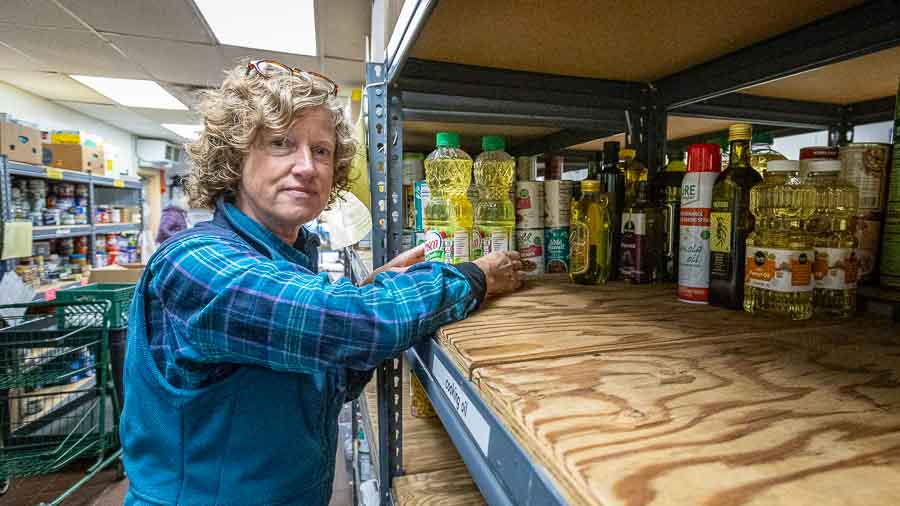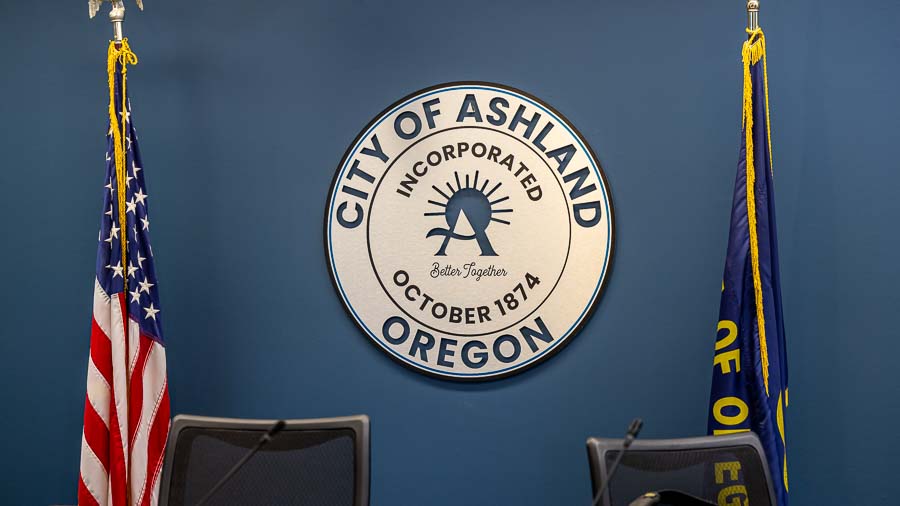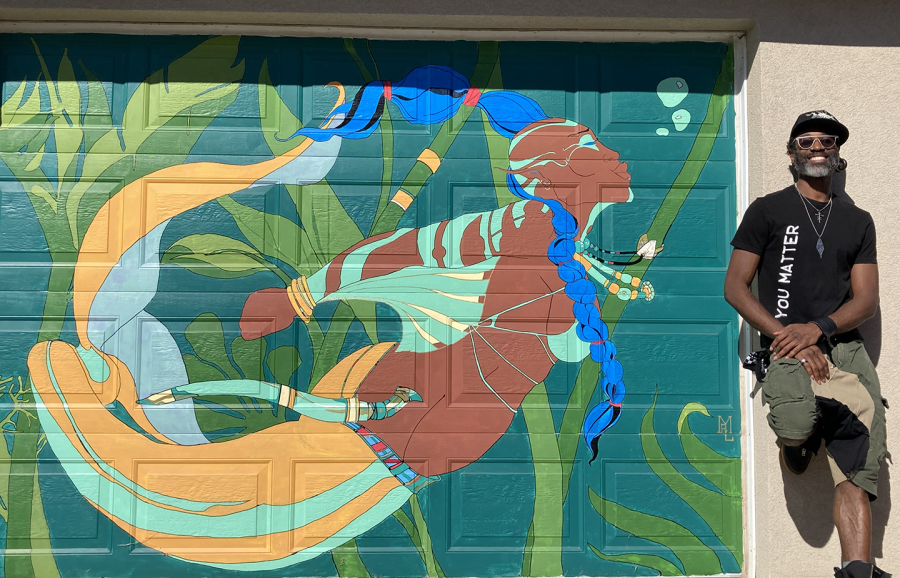Thanks to a $20,000 grant from the Oregon State Preservation Office, SOU students, faculty to travel to eastern Oregon to conduct archaeological excavations
By Holly Dillemuth, Ashland.news
With a newly funded $20,000 grant from the Oregon State Historic Preservation Office, some Southern Oregon University Sociology and Anthropology Program students and staff will travel to eastern Oregon this fall to perform archaeological excavations for a logging ghost town that once was home to a diverse community in the early 20th century, including African-American and white loggers.
The state Historic Preservation Office offers matching grants for rehabilitation work that supports the preservation of locations listed on the National Register of Historic Places, or for work that helps to identify, preserve or interpret archaeological sites.
SOU will collaborate with students from Eastern Oregon University and Whitman College, in Walla Walla, Washington, on a project near the Maxville Heritage and Interpretive Center of Wallowa County. They’ll conduct investigations on-site Sept. 4-14, searching for the hidden stories that lie beneath the surface of the town site.
Students will gain professional experience in archaeological survey, excavation and analysis through field work that will take place through mid-September, and through laboratory work that will occur over the coming academic school year.

“There’s been a fair amount of work done recently by African-American communities to start telling the story of the African-American experience in Oregon,” said Mark Tveskov, an SOU professor of anthropology.
“This really hits a spot in the story that hasn’t been told,” he added. “We have a notion of rural Oregon, the logging industry as being very much a sort of white space, but it wasn’t. It was a very diverse space with African Americans and recent immigrants and Latino people and this is a rare opportunity to speak to that.”
SOU students will also work with Maxville Heritage personnel on geophysical survey and traditional archaeological excavation that will identify significant features of the Maxville townsite and gather a representative sample of artifacts to better understand the lived experiences of Maxville’s inhabitants before the town died out during the Great Depression and a downturn in the lumber market.
Tveskov was the lead author on a nomination that led the National Park Service to place Maxville on the National Register of Historic Places. Those efforts led the Maxville project to earn a 2024 Oregon Heritage Excellence Award from the State of Oregon.
“A field like archaeology is a balance between academic and theoretical ideas and then engaging with local communities and getting hands-on experience,” Tveskov told Ashland.news on Tuesday.
“It’s kind of an essential element of their experience to get practical experience, particularly with a living community that’s trying to work with their own heritage like that,” he added.
Tveskov shared plans to bring at least two SOU students on the field project who will be joined by Anthropology/Sociology students from EOU and anthropology, art history and environmental studies students from Whitman College.
Maxville, about 13 miles north of the town of Wallowa, was once filled with about 400 residents and was Wallowa County’s largest railroad logging town from the mid-1920s to mid-1930s, according to a news release. Loggers and their families came to Maxville in the 1920s from the South and the Midwest in search of work, and the Bowman-Hicks Lumber Company — which owned the town — hired Black loggers despite Oregon’s exclusion laws of that period.
Maxville’s African American families lived in segregated housing, attended segregated schools and played on a segregated baseball team, but Black loggers worked side-by-side with their white counterparts, according to a news release.
“(The lumber company) recruited Black and white southern loggers and some from the Midwest to Oregon, so they came with those Jim Crow mindsets in place,” said Gwen Trice, founder and executive director of the Maxville Heritage Interpretive Center, located in Joseph, in a phone interview with Ashland.news.

Trice added that in the 1920s, Oregon’s exclusion laws for Black Americans were still in full force, and the Ku Klux Klan was at its strongest in the state.
“So they were essentially moving to another deeply racist space, where they were burning crosses on the adjoining mountains outside of Maxville, (and) at least once came into the logging town,” she said. “At one point they had about a 200-person Klan march in the town of Wallowa, just below where Maxville was located.”
The museum is located in the town of Joseph, Oregon, the only arts and cultural district in the state of Oregon.
“It’s important to be where people come,” she said. “Typically our county goes from just over (a population of) 7,000 to 100,000 visitors from all over the world, during the summer and shoulder months.”
Established and run by Trice, the center is dedicated to the history of African American, Indigenous and immigrant loggers in the Pacific Northwest.
The Maxville townsite where students will conduct excavation work was acquired by the museum in 2022 to be developed as an interpretive, educational and communal space, according to a news release.
Trice said that the artifacts excavated from the 96-acre town site (the interpretive center owns a total of 240 acres) will help tell a larger story of the lives these individuals lived.
“We have an idea of where different parts of the community are,” Tveskov said. “We’re going to do some surface collection of artifacts around those areas and then do some limited excavation in areas to try to broaden our sample of artifacts.”
Students will dig a series of small holes, each measuring about a square yard.

“The specific thing we’re looking for is to help Maxville Interpretive Center understand the nature of the archaeological deposits at the site,” he said. “We know a lot about the layout of the community as it was, but we know that in sometimes general terms, and because the museum is going to be using the site for public interpretation.
“If we can identify, for example, a specific area where an African-American family lived and excavate, we could maybe find some artifacts that speak to the particulars of their lived experience in that space,” he added.
The interpretive center has aerial photos of the site from the 1940s which will help direct the center’s use of lidar technology in the near future to give the center a better sense of what’s underneath the site.

“As we dig into the meat of the story, it’s a national story that we’re telling,” Trice said, “but at one point nobody was really telling it. Some archives were around, but not in Oregon.
“It’s important to tell an accurate account of our history, and it’s also important to engage a sense of place to our youth that are in school that are kids of color … to let them hear a documented story of their area, of the people that lived, thrived and did business in those spaces and it allows for students in the classroom to really have a connection to a sense of place.
“It’s really part of telling the American narrative,” she added.

She has spoken about the body of work at the National African American Association of Museums, which is also associated with the Smithsonian Museum.
For Trice, the story is personal, too.
Trice is the daughter of Black eastern Oregon logger Lafayette “Lucky” Trice, who worked and lived in Maxville before he met Trice’s mother, Dorothy.
Lafayette Trice, who later moved to La Grande, served as the first African-American commander for the American Legion in the state of Oregon.
Trice established the interpretive center in December 2008, after returning to her hometown region of eastern Oregon following a lengthy career at Boeing in Seattle.
She had grown up in the 1960s and 1970s in eastern Oregon, largely not seeing Black Americans represented in her history classes in regards to early life in the region.
More information
For more on Maxville’s history, go online to foresthistory.org/digital-collections/reclaiming-maxville/.
“I came back home and I began to secure this information and interview all of the elders and … it’s grown from there,” Trice told Ashland.news. “I was going to tell my history but I realized it’s not just me, it’s the community, it’s Oregon, it’s a national story as well.”
She traveled around the state, interviewing individuals in their 90s who had logged in Maxville at the time as well as the adult children of late loggers.
“I went as far as Dallas, Texas, to get one of my interviews, one of the last living Black loggers from Maxville,” Trice said.
“(I) really began to pull together the body of the story, and I mean the research goes on, it continues today,” Trice said. “We have throughout this process created a space to begin to create course curriculum to help tell the story. That’s being taught to create traveling exhibits that are going around the state, that have gone into Washington and Idaho. We have been working with the Smithsonian, who have been out, I believe, a total of four different times, and they have been working with me to create training opportunities for national interpreter guide training.”
Reach reporter Holly Dillemuth at [email protected].

